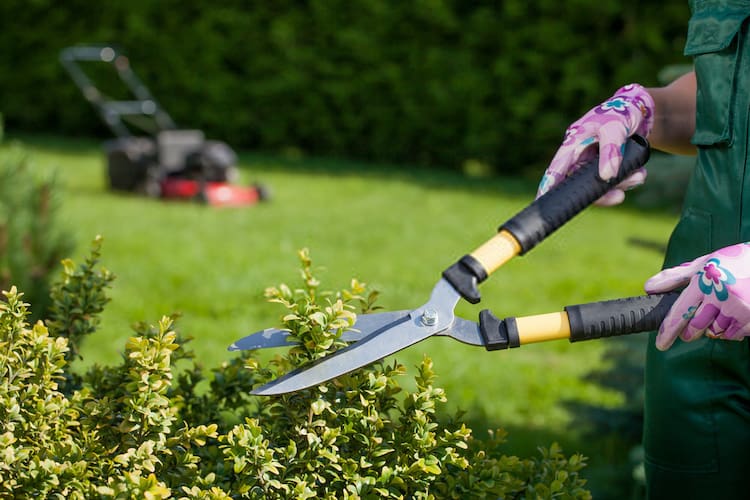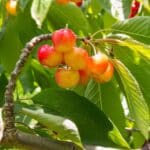Is it ok to trim bushes in the fall? This is one of the frequently asked questions we get about trimming.
The fact is: Pruning your plants can have a significant impact on how they grow the next planting season. It keeps them healthy, balanced, vigorous and stops larger varieties from taking over the garden.
Bushes play a vital role in your outdoor landscape finishing; they serve as ornamental borders on your property. But if your precious bushes are suddenly spreading all over your sidewalk, it may be time to get out your pruning shears and do some trimming.
However, fall is the perfect time of the year for trimming reliable, hardy plants. Read on to find out the plants best suited for fall pruning.
Table of Contents
Is It Ok To Trim Bushes In The Fall?
Bush trimming is essential to keep your garden safe and in check. Untrimmed bushes and trees will lead to less fruitful yields.
Although, the general rule is to trim right after blossom for flowering shrubs, at the beginning of spring or the end of winter for non-blossom shrubs (especially hard pruning), and not after mid-august for any shrubs.
But in all general rules, there are exceptions. Pruning helps to get rid of diseased or damaged areas before they spread and become a health hazard to your surroundings. Also, some plants withdraw and dieback in the fall to save up energy for the cold months.
These shrubs such as butterfly bush or wax myrtle that are likely to die from ice damage might be pruned in early winter or late fall to avoid damage and help them come back healthy. Trimming such plants will prevent them from losing shape and branches when extreme cold sets in.
Knowledge on which plants to trim in the fall is essential in guaranteeing a favorable outcome. Let’s take a look at some of these plants you can prune in fall.
Soft and bush fruit, gooseberries, blackcurrants, and redcurrants.
Plants You Can Prune in The Fall
Below are some of the plants that you can prune in the fall. But first of all, you will need good pruning loppers or secateurs for the job.
Summer-fruiting raspberries
Prune during fall. After they must have produced fruits – trim out the fruiting stalk. In the cooler months, trim down the fruited stalks of gooseberries, blackcurrants, and redcurrants to buds.
Perennial Bulbs
Bulbs yielding Perennial plants also profit from a late fall pruning. Examples of perennial plants that grow from bulbs are daffodils, spring-blooming bulbs such as hyacinths and tulips, and as well as summer flowers as hardy lilies.
For such plants, it is advisable to leave the foliages be, right after blossoming, since the plant makes use of it leaves during summer to fruit nutrients it stores for the coming planting season.
When the leaves start to look brown or yellow, saggy and weak, then they can be removed by cutting them carefully with garden shears or a sharp knife.
Perennial Cleanup
Spring or summer-blooming herbaceous perennials that serve as landscape borders during summer will need trimming maintenance in fall to prevent infections from fungal diseases.
Perennials such as peonies (Paeonia sp.), phlox (Phlox sp.), iris (Iris sp.), daisies (Rudbeckia sp.), and daylilies (Hemerocallis) all profit from a general pruning in fall to take out leaves and steps before heavy frost sets.
Newly planted trees and shrubs
Fall is the best time to trim young plants for them to grow into a defined shape right from the beginning. Shaping is always needed to ensure good looking trees and shrubs.
Mediterranean shrubs
Sun-loving shrubs such as Lavender, Rosemary, and Cistus, usually referred to as Mediterranean shrubs are highly tolerant of fall pruning.
After flowering, you can make use of secateurs or garden shear to trim the plants to remove dead foliages and reshape at once. The good thing is that there are garden pruners for everyone, even those with arthritic hands.
Conclusion
The answer to the question “is it ok to trim bushes in the fall” is dependent on the type of plants or bushes. An essential aspect of trimming is to know which plants to prune and when to prune them.
Proper pruning helps to remove unattractive, diseased, and unhealthy foliages that could be hazardous. And in turn promote healthy, new growth.
Finally, remember to trim and not over prune the plants, also, before pruning, ensure to wear protective clothing and types of equipment to prevent falls, cut and eye injuries.





